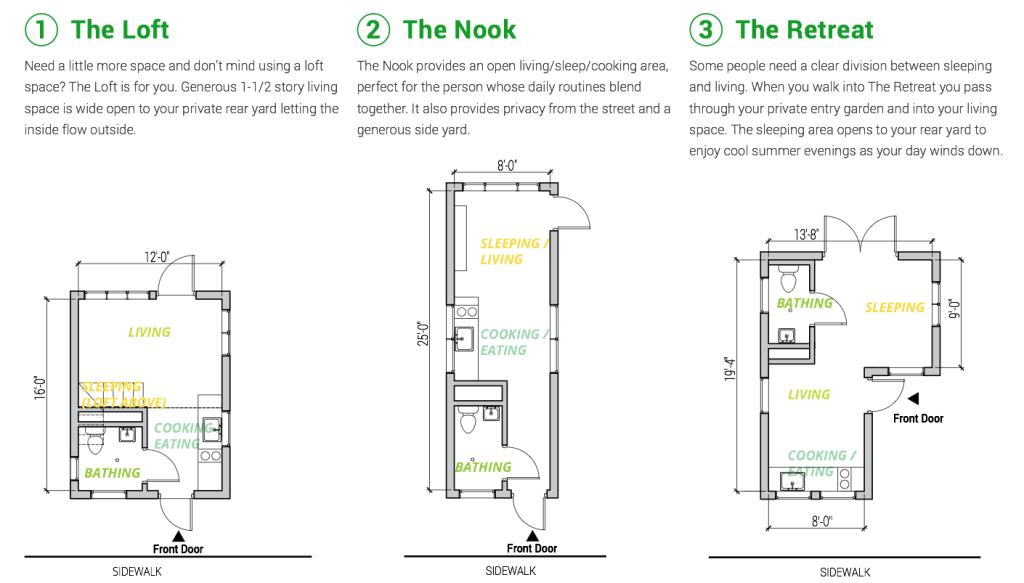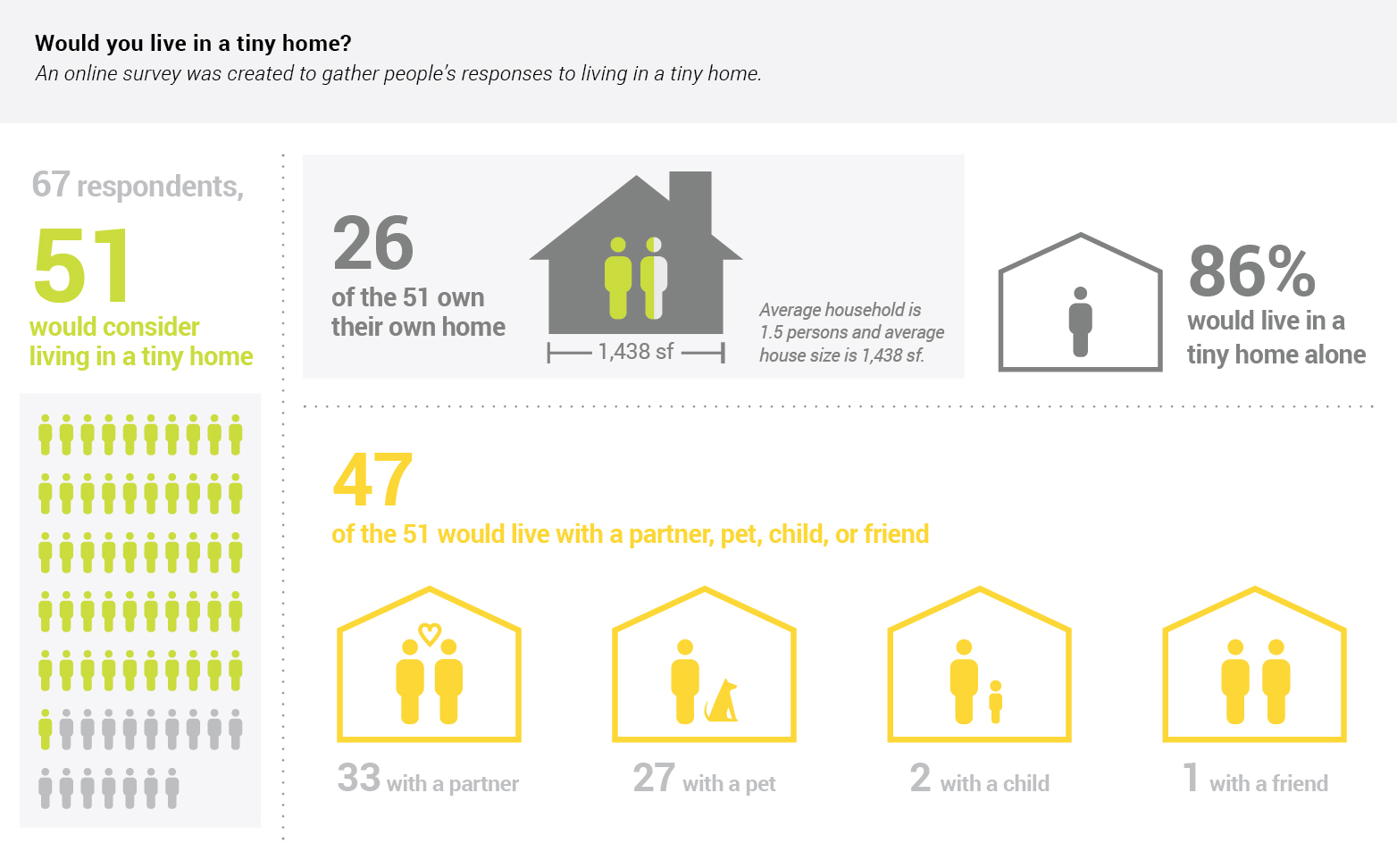After a year of work, Cincinnati’s first modern iterations of tiny living will soon become a reality when ground is broken on Wednesday, October 14.
The project was made possible through People’s Liberty, which awarded one of its first two Haile Fellowships to Brad Cooper last December. Since that time, Cooper, a professionally trained architect, has been working on the designs for the two homes.
Throughout the process, Cooper says that he has come across various challenges, but some of the most pressing have been related to the economics behind the homes. One of the driving goals of the project has been to create affordable living options for working class individuals. As a result, early on he partnered with the Over-the-Rhine Community Housing to secure the purchase of the two properties on Peete Street for just $1.
One of the homes is being made available to anyone interested in purchasing it, and will be listed at $200,000. This will include solar power generation on-site and a 15-year tax abatement valued at $98,000. The other home will be restricted to those that meet annual income qualifications set by the Department of Housing and Urban Development for the Cincinnati region.
“Hindsight provides some extra knowledge,” Cooper told UrbanCincy. “I would have liked the pricing to be less than what they’re set at now, but I still think it’s a good deal.”
While Cooper believes strongly in the final product, he does wish that some things were done differently in order to help reduce costs even more. In particular, that would have included completing the geotechnical investigation earlier and selecting a general contractor earlier in the process.
One of the changes made to the design for the income restricted home was the removal of the parking space. When the initial designs were unveiled on UrbanCincy, the incorporation of parking spaces for both homes was a major sticking point for many readers.
“Most people that have been to the site want a parking space and the surrounding neighbors agree,” Cooper explained. “It could be something a homeowner says they don’t want and we’ll have that conversation.”
Another criticism of the project has been that the two tiny homes might not be appropriate for a neighborhood like Over-the-Rhine that is populated with larger, multi-family buildings. Cooper says that he is looking forward to doing another project that is multi-family somewhere else in the neighborhood.
“Over-the-Rhine is ideal for micro living because anything you need is a short walk away, but that’s not exclusive to OTR,” said Cooper. “Cincinnati has some great inner ring neighborhoods.”
While higher densities may be the future for micro-apartments in Cincinnati, the two tiny homes on Peete Street – the first of their kind in Cincinnati – are something Cooper and People’s Liberty say they are proud to have introduced to the region.
“I’ve had the opportunity to work on a development project totally different than what’s being built today in Cincinnati,” Cooper said. “People’s Liberty offers the opportunity to step outside your comfort zone and dream big by diving deep into a challenge without requiring traditional performance metrics or revenue generation.”
The groundbreaking for the two tiny homes will take place at 5:30pm at 144 Peete Street this Wednesday. The free event is open to the public, and will include light food, cider and complimentary polaroid photos of guests digging on-site.
Based on early interest, Cooper says that he expects to close on the first home by the end of the month. Those that are interested in purchasing either of the homes can contact him at BradCooper@peoplesliberty.org, or submit an inquiry on the project’s website.
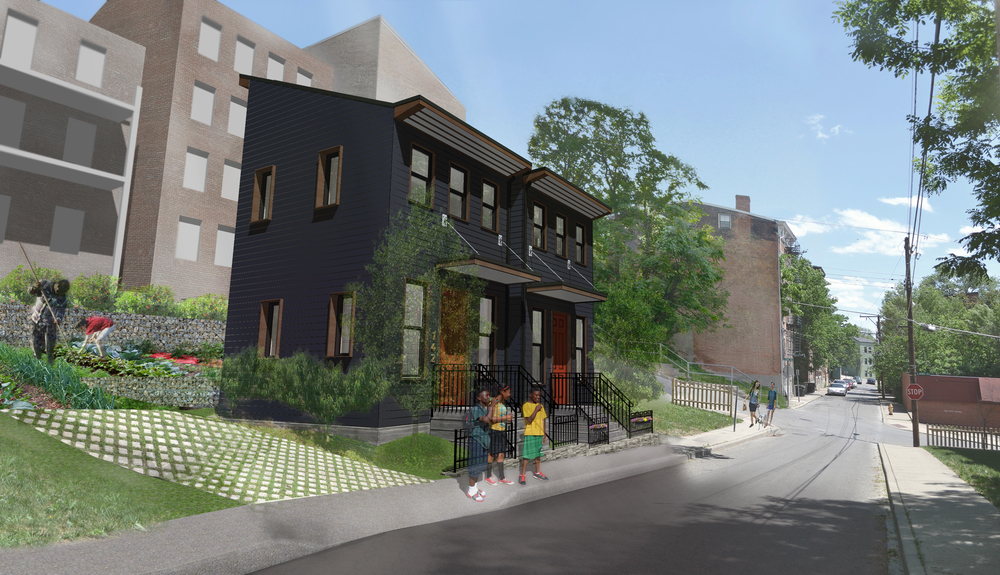
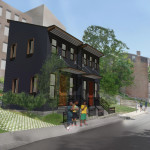


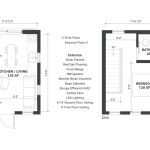

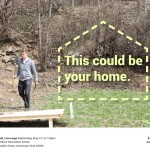

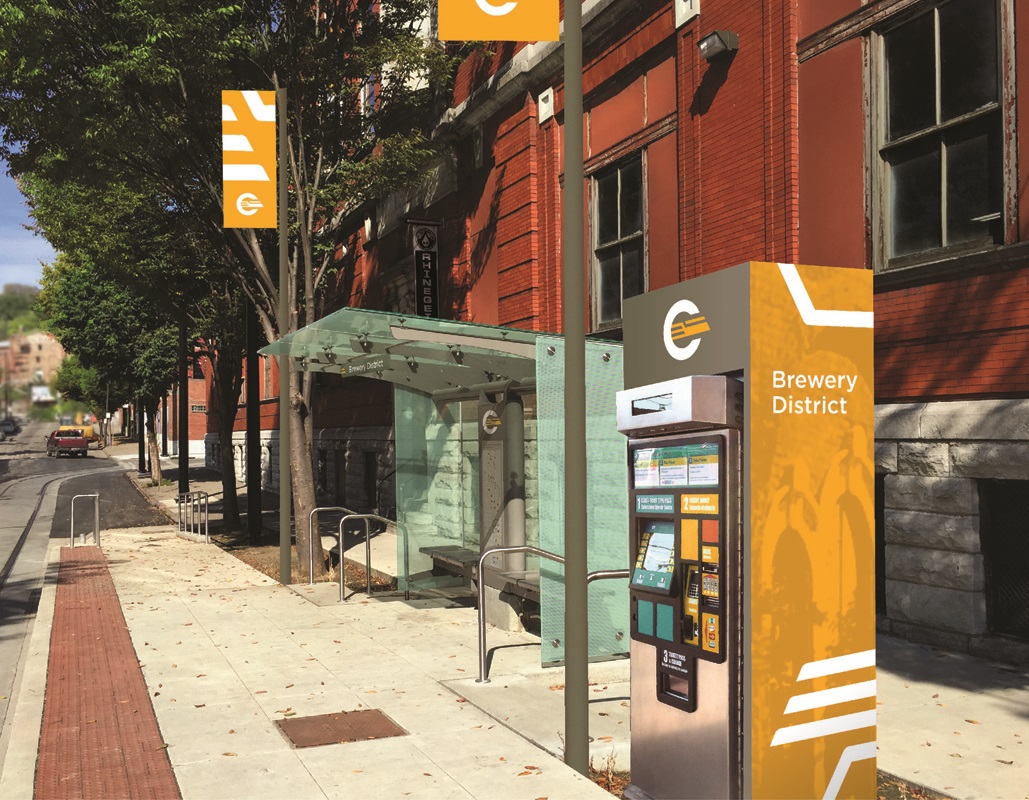
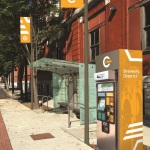

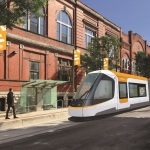


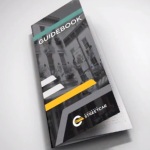
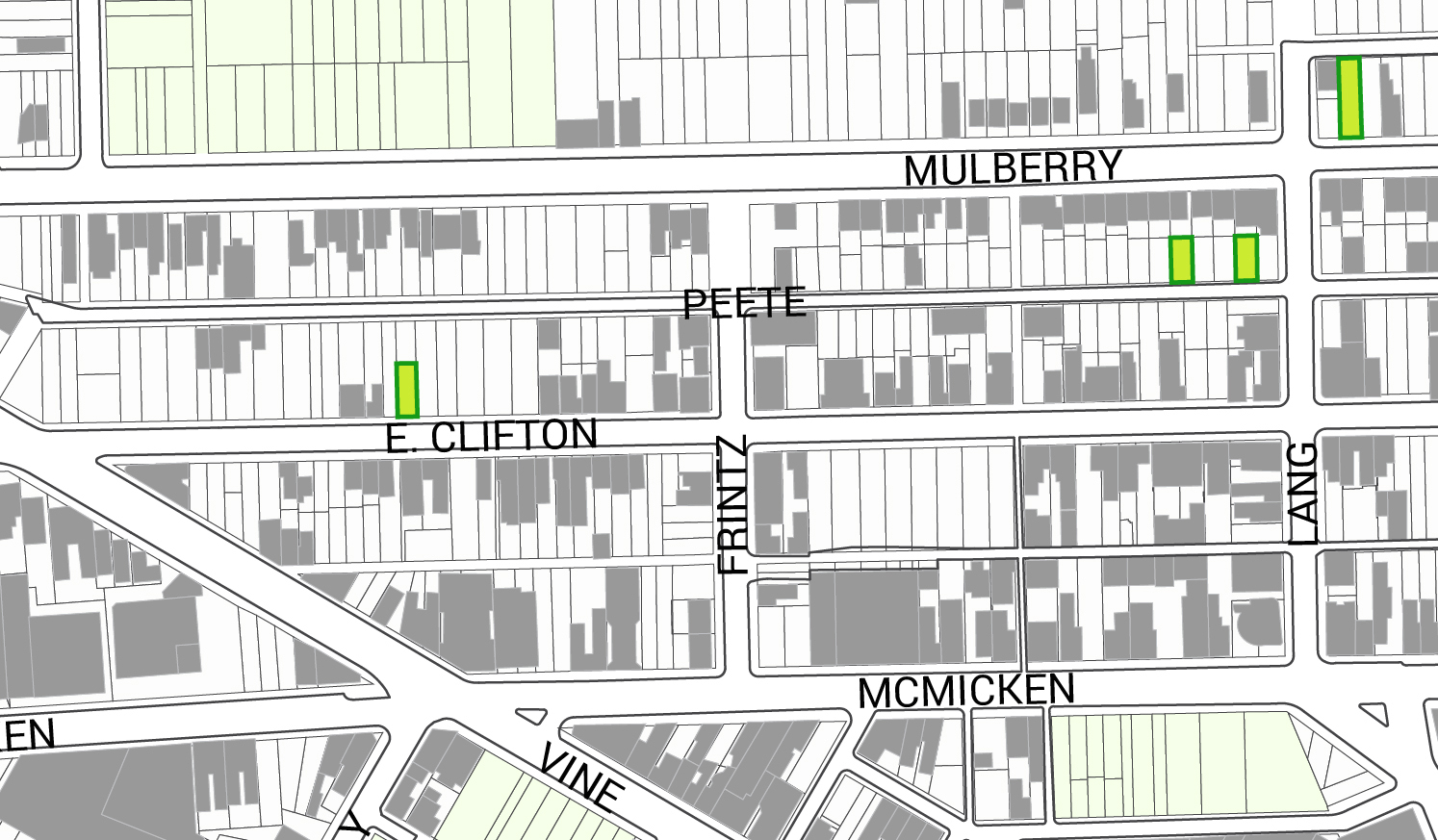
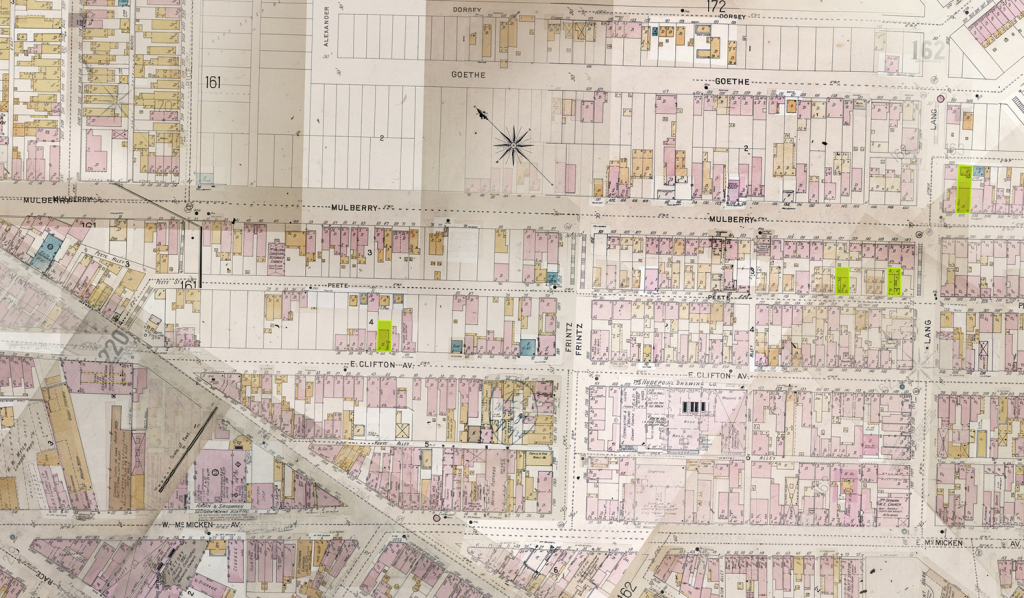 Sanborn Fire insurance map from 1904. Courtesy of the Public Library of Cincinnati and Hamilton County
Sanborn Fire insurance map from 1904. Courtesy of the Public Library of Cincinnati and Hamilton County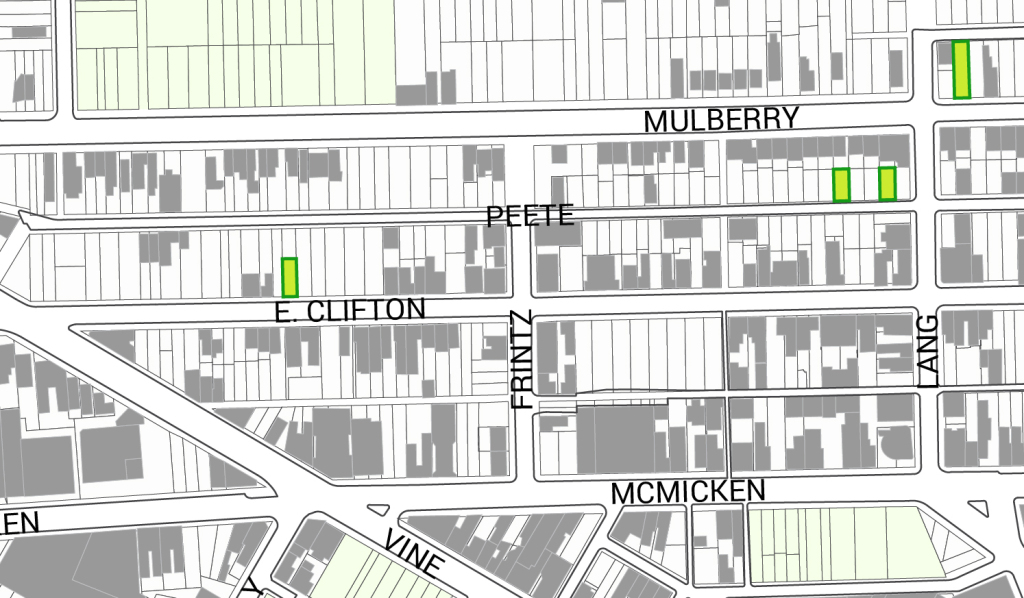 Modern day plan
Modern day plan